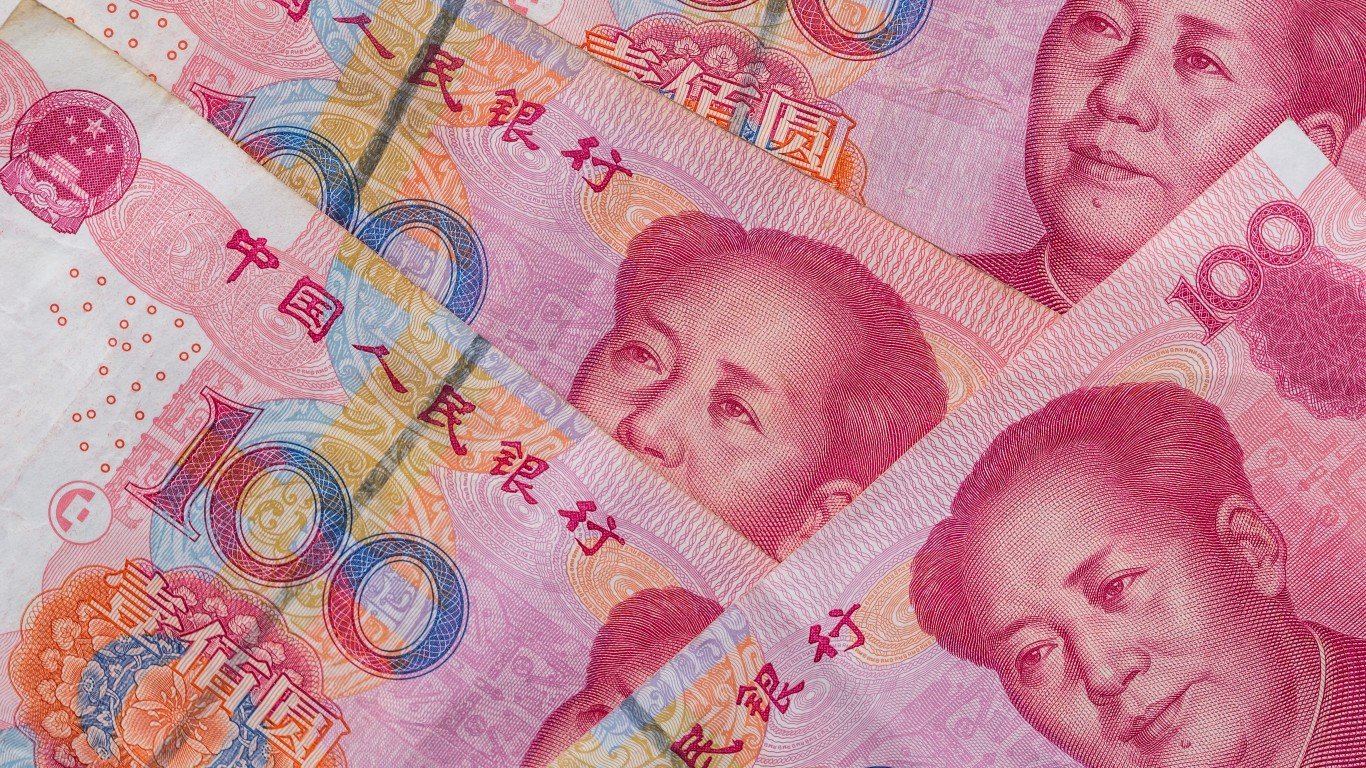

Russia’s largest oil and gas company, Rosneft, placed a record bond issuance in Chinese yuan, equal to $2.17 billion. This follows a record-high trade increase between Russia and China, up 34.3% in 2022. Is this the vector by which the Chinese yuan gets internationalized?
Raising Funds Amid Russian Financial Deplatforming
Corporations typically raise cash by issuing bonds. Investors buy these debt securities on the promise of future profit, while the corporations gain access to money in the present to expand their operations. In return, investors receive interest payments on bonds, reflecting the risk level of the corporation.
On March 15th, Russian gas and oil giant, Rosneft, placed the first coupon (interest payment) for yuan-denominated 10-year bonds at a 3.5% annual interest rate. Last September, Rosneft issued its first yuan bonds, equal in amount and maturity but at an even lower rate of 3.05%. The second placement is the first phase of bond issuance, amounting to 15 billion yuan, equivalent to ~$2.17 billion. The actual bond issuance is scheduled to take place on March 20th.
At a 10-year maturity period and 3.5% interest rate, Rosneft’s bonds are a relatively low-risk investment option, reflecting investors’ confidence. Since Rosneft is a state-owned company and the record-high issuance of yuan-denominated bonds for such a critical infrastructure firm, this signals a strategic tightening of ties between Russia and China.
Other Russian Commodity Giants are Also Yuanizing their Debt Offerings
Alongside Rosneft, the world’s fourth largest gold mining company tapped into yuan last August. This is Russia’s top gold miner, Polyus, having issued 4.6 billion yuan ($666.4 million) worth of bonds at 5-year maturity and a 3.8% annual interest rate.
Likewise, Russian aluminum conglomerate Rusal launched two 5-year yuan-denominated bond placements last July at 2 billion yuan ($289.7 million) each. This was the first yuan bond issuance in Russia. It created such a high demand that the interest rate was reduced by over a percentage point to 3.9%.
China’s trade with Russia peaked in 2022 at 1.28 trillion yuan ($190 billion). According to Gazprom, Russia’s natural gas alone, through the Siberian pipeline, increased by 50% during the same year.
Sanctions + Russia’s Commodities = Yuan Internalization
As a result of Western sanctions against Russia and Russia’s abundance of natural resources that China needs as the world’s manufacturing powerhouse, the Chinese yuan is gaining global traction. By mid-2022, Russia had become the third-largest market for yuan payments.
According to the Bank for International Settlements (BIS), the yuan became the fifth most active currency for global payments in 2022, up from the eighth rank in 2019. The yuan market’s share jumped from 4% to 7% in percentages. Although this is still way behind the top traded currencies, USD, EUR, JPY, and GBP, it is the beginning of a significant de-dollarization trend.
What About Russian Sanctions?
When the West (US/EU) de-platformed key Russian banks from SWIFT, it was akin to banning crypto exchanges. While the latter would erect a wall on fiat-to-crypto rails, the former makes it exceedingly difficult to access USD liquidity internationally.
However, Russia has drastically reduced its US government debt holdings even before unprecedented sanctions. By May 2018, Russia held only $14.9 billion in US Treasuries, compared to March of the same year at $96.1 billion. Although the public has been informed that these sanctions are severe, quite the opposite happened.
Owing to the abundance of natural resources, in 2022, Russia has accumulated a record windfall from commodity exports worth $227 billion, according to Bloomberg Economics. Russia placed third (~$80 billion) out of that cash stockpile across offshore accounts and investments.
As Russia forges a closer relationship with China, the ruble outperformed the Dollar Strength Index (DXY) by +4.6%, year-to-date. In the meantime, following the destruction of the Nord Stream 2 gas pipeline, Germany is facing a liquid natural gas (LNG) shortage for next winter.
According to German Vice Chancellor Robert Habeck’s recent budget letter, the current liquid gas agreement secures 86 billion cubic meters, an 11 billion deficit from what is needed.
“For the economy, it will mean a reduction in output,”
Mark Helfrich, member of Germany’s Bundestag committee on energy affairs.
Given that Germany is Europe’s economic engine, the entire EU economy is disadvantaged. It is still not clear how more expensive LNG imports could be secured. Some estimates, accounting for a ramp-up in LNG terminals, place the EU’s energy crisis exit in 2026.
Year-to-date, the Russian ruble outperformed the euro by +8.5% on the forex market. As China, Russia, India, and other BRICS countries and candidates join forces, de-dollarization seems inevitable but is still many years from posing a significant threat.
This article originally appeared on The Tokenist
Essential Tips for Investing: Sponsored
A financial advisor can help you understand the advantages and disadvantages of investment properties. Finding a qualified financial advisor doesn’t have to be hard. SmartAsset’s free tool matches you with up to three financial advisors who serve your area, and you can interview your advisor matches at no cost to decide which one is right for you. If you’re ready to find an advisor who can help you achieve your financial goals, get started now.
Investing in real estate can diversify your portfolio. But expanding your horizons may add additional costs. If you’re an investor looking to minimize expenses, consider checking out online brokerages. They often offer low investment fees, helping you maximize your profit.
Thank you for reading! Have some feedback for us?
Contact the 24/7 Wall St. editorial team.



